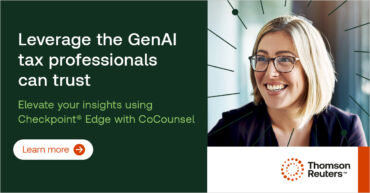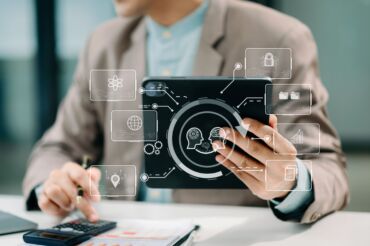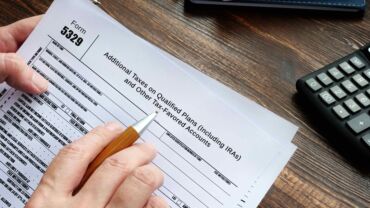In the world of accounting audits, accuracy and completeness are paramount. Auditors rely on data review to ensure the reliability and integrity of financial statements. However, manual data review processes can be time-consuming, prone to errors, and may not provide a comprehensive view.
A recent report from the Public Company Accounting Oversight Board (PCOAB) indicated that, “Approximately 17% of the total comment forms for each of the 2021 and 2022 inspection cycles contained deficiencies where the auditor did not perform sufficient procedures to test (or sufficiently test controls over) the accuracy and completeness of IPC or other data and reports including information produced by service organizations.”
This is where technology can help. Let’s take a closer look at the importance of accuracy and completeness in audit data review and how leveraging technology can enhance audit quality, efficiency, and effectiveness.
Jump to:
| The significance of accuracy and completeness in audit data review |
| What is the role of technology in enhancing audit data review |
| Automated data analysis |
| Artificial intelligence (AI) and machine learning (ML) |
| Data visualization |
| Real-time data access |
| Data security and integrity |
| Evaluating audit data |
The significance of accuracy and completeness in audit data review
Accuracy and completeness are fundamental principles in auditing. Auditors must ensure that financial statements are free from material misstatements and that all relevant information is included. Accuracy refers to the correctness of data, while completeness ensures that all necessary information is present.
Data review involves examining financial records, transactions, and supporting documentation to verify their accuracy and completeness. It helps auditors identify errors, irregularities, and potential fraud. Inaccurate or incomplete data can lead to incorrect financial statements, misinformed decision-making, and reputational damage for both the auditors and the audited organization.
What is the role of technology in enhancing audit data review
Technology has revolutionized the audit profession, offering auditors powerful tools to enhance data review processes. Here are some ways technology can help:
Automated data analysis
Automated data analysis revolutionizes the way auditors handle extensive data sets by utilizing advanced tools and techniques. It enables efficient data processing, swiftly and accurately handling large volumes of structured and unstructured data. Auditors can sample data effectively by using statistical techniques to stratify data based on risk factors. Automated data analysis tools detect anomalies, outliers, and red flags, allowing auditors to focus on high-risk areas.
Trend analysis and predictive analytics provide insights into financial performance and future outcomes. Visualizations like charts and graphs simplify data interpretation and reporting. Continuous monitoring and auditing in real-time ensure ongoing data review, enhancing accuracy and completeness. Overall, automated data analysis empowers auditors to process and analyze data efficiently, detect risks, and provide valuable insights, making it essential in today’s data-driven business environment.
Artificial intelligence (AI) and machine learning (ML)
Artificial intelligence (AI) involves the development of computer systems that can perform tasks requiring human intelligence. It can be categorized into Narrow AI, which focuses on specific tasks, and General AI, which aims to possess human-level intelligence.
Machine learning (ML) is a subset of AI that enables computers to learn and make predictions without explicit programming. ML models are trained using large datasets, and algorithms such as linear regression and neural networks are used for training and prediction. Supervised learning uses labeled data, while unsupervised learning finds patterns in unlabeled data.
Data visualization
Data visualization is the use of visual elements like charts, graphs, and maps to represent data in a clear and concise manner. Its purpose is to facilitate quick and effective analysis, enabling the identification of patterns and trends in data. Different types of visualizations, such as bar charts, line graphs, and pie charts, can be used depending on the data and message. Effective data visualization follows design principles like clear labels, appropriate colors, and annotations.
Interactive visualizations allow users to explore and interact with the data, while various tools and software, such as Tableau and Power BI, facilitate the creation of visualizations. Data visualization can also be used to tell stories and engage audiences. Overall, data visualization plays a crucial role in data analysis, decision-making, and communication by uncovering insights and facilitating understanding.
Real-time data access
Real-time data access allows users to retrieve and view the most up-to-date information without delay. It is crucial for time-sensitive decision-making and monitoring real-time events. Data can be sourced from sensors, IoT devices, social media feeds, transactional databases, and streaming platforms. Technologies like in-memory databases, event-driven architectures, and real-time analytics tools enable fast and efficient data retrieval and processing.
There are some challenges to real-time data access, including ensuring data accuracy, handling high data volumes, and maintaining data security. The benefits, however, of real-time data access include faster decision-making, improved operational efficiency, enhanced customer experiences, proactive monitoring, and real-time analytics. Use cases range from industrial process monitoring to fraud detection, social media sentiment analysis, inventory management, and traffic monitoring. Real-time data access empowers auditors to stay competitive in today’s data-driven world.
Data security and integrity
Data security and integrity are essential for protecting data from unauthorized access, ensuring accuracy and reliability, and complying with regulations. Data security involves measures like encryption, access controls, and regular audits to safeguard data from external and internal threats. Data integrity ensures data accuracy and consistency through validation, error detection, and backup processes. Breaches in data security can lead to unauthorized access, data breaches, and financial losses, while data integrity issues can result in inaccurate decision-making and loss of trust.
Best practices include risk assessment, strong access controls, encryption, regular backups, employee training, and security monitoring. Compliance with regulations like GDPR and HIPAA is crucial. In cloud computing, organizations should choose providers with robust security measures, encryption, and access controls. Continuous monitoring and updates are necessary to address evolving threats. Implementing strong security measures and ensuring data integrity helps protect data assets and maintain stakeholder trust.
Evaluating audit data
Accuracy and completeness are critical in data review for accounting audits. Technology plays a vital role in enhancing the accuracy, efficiency, and effectiveness of the audit process. By leveraging automated data analysis, AI and ML algorithms, data visualization, real-time data access, and robust security measures, auditors can ensure the reliability and integrity of financial statements.
Embracing technology empowers auditors to focus on value-added tasks, such as data interpretation and strategic insights, ultimately improving audit quality and client satisfaction. As technology continues to evolve, auditors must embrace these advancements to stay ahead in an increasingly complex and data-driven business environment.
Thomson Reuters provides world-class auditing solutions that help to ensure fast, accurate, and complete audit reviews. Learn more about all of our accounting and audit solutions to get started.
You can also check out our blog for additional information.











